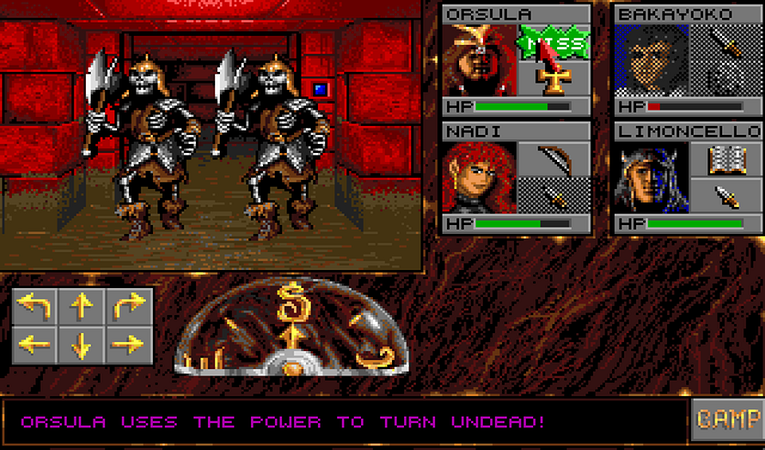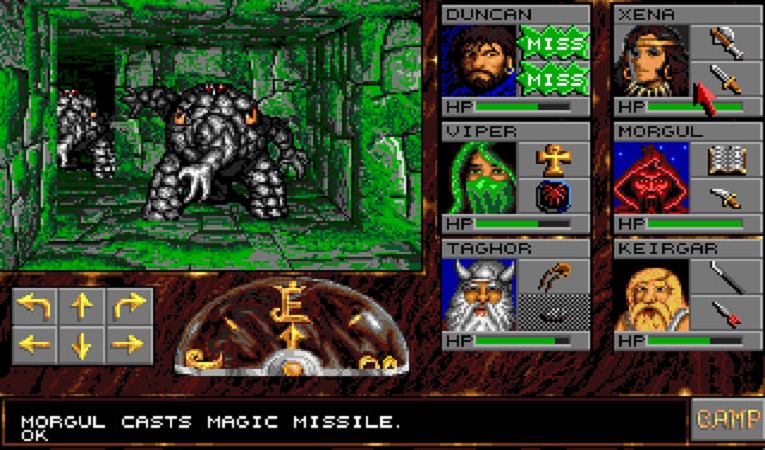
“Eye of the Beholder,” released in 1991, is undoubtedly a game that has earned a place in gaming history. Developed by Westwood Associates and published by Strategic Simulations, Inc. (SSI), this classic role-playing game (RPG) transported players into a world of fantasy, danger, and intrigue. In this game, you control a band of four brave adventurers who must journey into the sewers below the city of Waterdeep to investigate the source of evil that lurks there. At the core of “Eye of the Beholder” lies its engaging and intricate gameplay mechanics. The game’s interface and controls seamlessly facilitated exploration and interaction with the game world. Players could assemble a party of adventurers, each with their unique skills and abilities. The party’s composition and cooperation played a pivotal role in overcoming challenges and puzzles, fostering a sense of strategy. One of the most innovative aspects of the gameplay was the real-time movement combined with turn-based combat. This hybrid system allowed players to explore dungeons and navigate corridors in real time while transitioning into a turn-based mode when combat ensued.

This strategic approach to combat added depth to the gameplay, requiring players to carefully consider their actions in the heat of battle. “Eye of the Beholder” immersed players in a richly detailed and atmospheric world. The game’s narrative was intricately woven into the fabric of the dungeons players traversed, as each level unveiled new layers of the story. Parchments, journals, and environmental clues provided fragments of lore, encouraging players to piece together the overarching narrative. This storytelling approach deepened the connection between players and the game’s world, fostering a sense of exploration and discovery. Some secrets are embedded within puzzles and riddles that require careful observation and critical thinking to decipher. These puzzles often hold the key to unlocking hidden doors, revealing secret paths, or accessing hidden areas. The solutions to these puzzles can be found in the game’s environment and clues. The game’s setting was brought to life through stunning visual design and intricate level layouts. Each dungeon level was meticulously crafted, offering a sense of progression and increasing challenges.

From dank, torch-lit corridors to grand chambers and treacherous traps, the environments were diverse and immersive, contributing to the game’s atmosphere and sense of wonder. The Amiga version of “Eye of the Beholder” showcased the platform’s technical capabilities in a remarkable way. Leveraging the Amiga’s graphics and sound capabilities.(compared to the MS-DOS version) The Amiga’s sound chip “Paula” allowed for hauntingly atmospheric music and immersive sound effects. The eerie echoes of footsteps in the dark corridors and the otherworldly ambiance of magical spells further deepened the player’s engagement with the game’s setting. “Eye of the Beholder” remains a shining example of the creative and technical accomplishments of the 90s. With its innovative gameplay mechanics, captivating storytelling, and enduring influence on the RPG genre, the game stands as a hallmark of classic gaming brilliance. It’s one of those games which you can’t stop, no matter how hard you try – even though it has plenty of save options, you will want to carry on playing to the bitter end.













